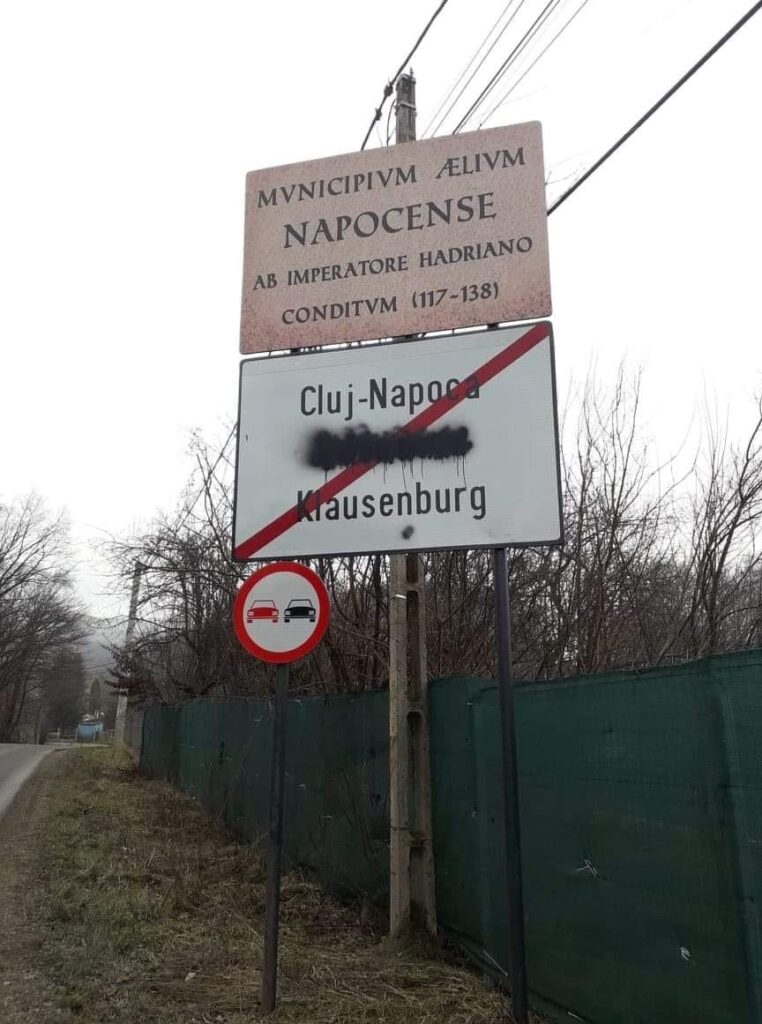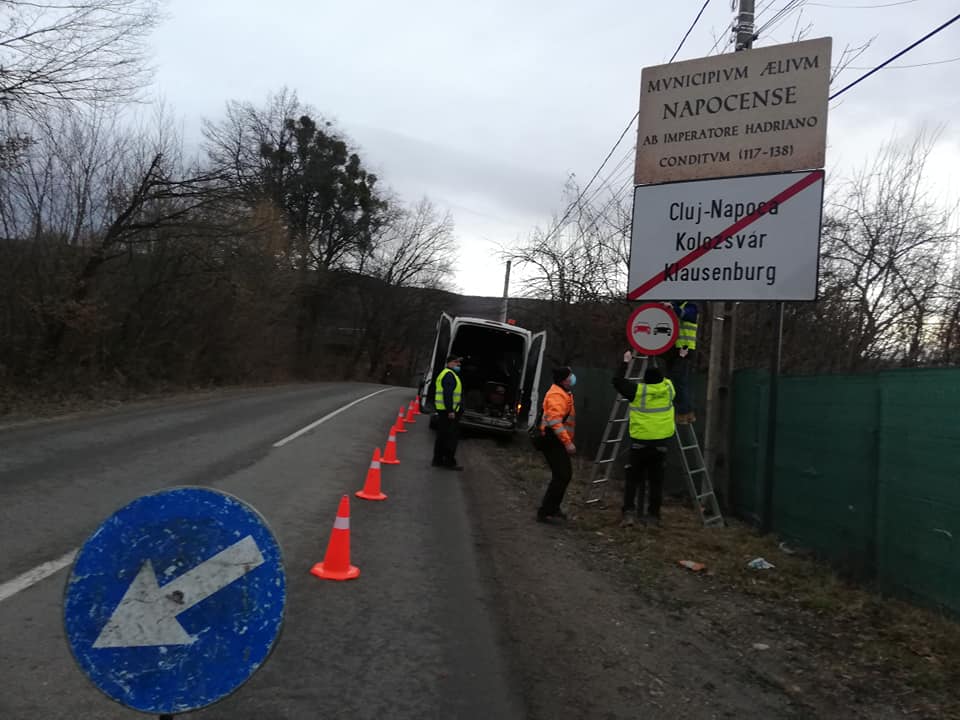Unknown perpetrators have painted over the Hungarian inscription on the trilingual town sign of Kolozsvár (Cluj-Napoca in Romanian, and Klausenburg in German). The sign was replaced Wednesday afternoon by representatives of the town council. Both the Democratic Alliance of Hungarians in Romania (known by its Hungarian acronym of RMDSZ) and the Transylvanian Hungarian Alliance (known by its Hungarian acronym of EMSZ) filed complaints with the police. (kronikaonline.ro)

The perpetrators sprayed over the town’s Hungarian name only, while the Romanian and German inscriptions, just like the Latin text above the town sign referring to the town’s past from the Roman Empire, remained untouched.
“I deeply condemn the act, and there is no place for such expression either in Kolozsvár or in the twenty-first century! Do not go for cheap provocation!”
wrote Vice-Mayor of Kolozsvár Emese Oláh on her Facebook page. The RMDSZ politician added that the RMDSZ’s local organization is filing a complaint with the police, and that the town council had ordered the cleaning of the sign. By Wednesday afternoon, this had already happened. “I personally checked the reinstatement of the original condition [of the sign]. It was a cheap provocation, which I deeply condemn! wrote the vice-mayor in her second post.

The town sign’s defacing was also condemned by the Transylvanian Hungarian Alliance. The EMSZ pointed out that this matter – just like the paint over of the Szekler Martyrs monument in Marosvásárhely (Târgu Mureș) last week, with the Romanian national colors– is more than simply vandalism. The EMSZ announced that they are filing a complaint against unknown perpetrators for instigation and incitement to hatred.
“We expect the authorities to do everything they can hunt down and prosecute the perpetrators.”
– states an alliance communique.
The struggle to have the town’s name in Hungarian and German beside the Romanian on the town signs had been going on for several years before it actually succeeded. Primarily, activists of the Musai-Muszáj movement organized awareness-raising actions for trilingual signs, but finally a court decision obliged the local council to fulfill the request.
The Kolozs (Cluj) County Regional Court decided for the first time four years ago on February 21, 2017 that the town signs at its perimeters have to include the Hungarian. The first multi-language sign was then set up, three months later, on May 16, 2017.
Currently, about 50,000 Hungarians live in Kolozsvár, which is about 16 percent of its population. Thirty years ago, in the early 1990s, this proportion was 23 percent; in the 1950s, 50 percent; and in the early twentieth century, before WWI, 82 percent.
Title image: Unknown perpetrators sprayed over the Hungarian inscription on the trilingual town sign of Kolozsvár. (Photo: Emese Oláh’s Facebook page)